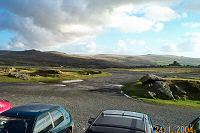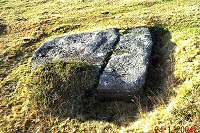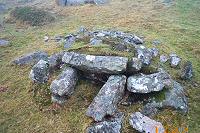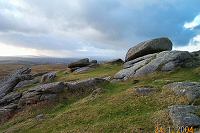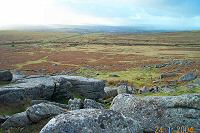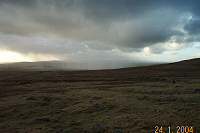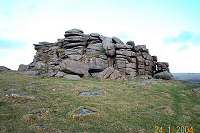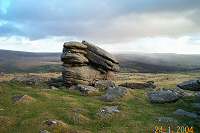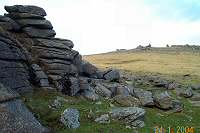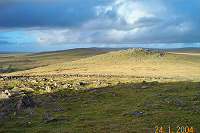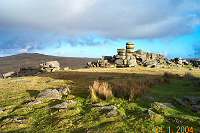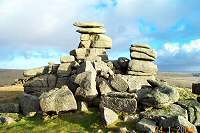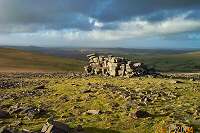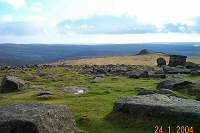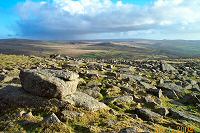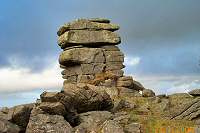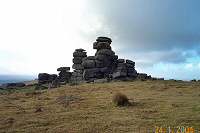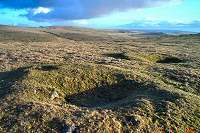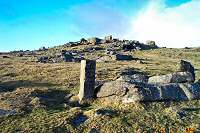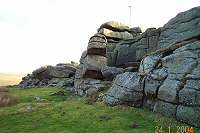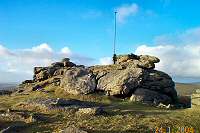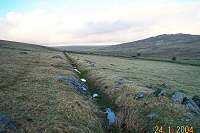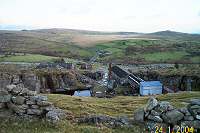
All | Little | Shorter | Standard | Longer | Tors | Relics | History | Links | Panoramas | Home
|
|
Staple TorsThere are three parts to Staple Tors - Little, Mid and Great. Great Staple Tor is famous for its towers (or steeples) of granite blocks that perch on each other creating unusual shapes. Little Staple Tor has an extensive clitter field that was exploited in the 19th century to make a granite stone dressing industry. The Staple Tors together with Roos Tor form a chain of tors that flank the west side of the Walkham valley. From the road at Merrivale these tors are impressive, especially with the bulk of Great Mis Tor on the eastern side. They are very easy to get to and provide good views and a pleasant couple of hours out on a nice Sunday afternoon. It would be easy to extend the walk beyond Roos Tor.Park at the roadside car park at SX 539750 and walk north up the slopes of Little Staple Tor. Carry on north to the other Staple Tors. From Great Staple Tor it is easy to visit Roos Tor and then head eastward along the slope back to the car park.This is a straightforward walk of a couple of miles. You are never very far from the road although the army firing range starts at Roos Tor.
|
|
All | Little | Shorter | Standard | Longer | Tors | Relics | History | Links | Panoramas | Home | |
